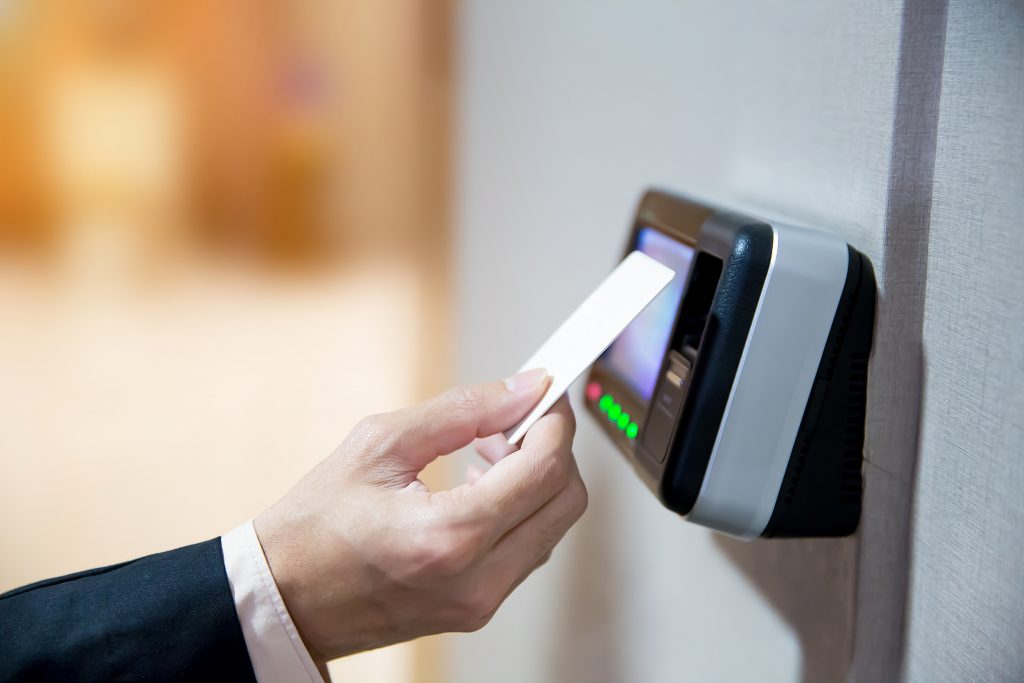
In an era where the security of physical assets, intellectual property, and personnel is more crucial than ever, the strategic importance of robust building access control systems in Alberta cannot be overstated. These systems are not just a feature of high-security environments; they are a fundamental necessity for businesses of all sizes seeking to safeguard their operations.
The evolution of security measures from traditional methods to sophisticated access control systems marks a significant shift in how businesses approach safety and security. These advanced systems offer not just protection but also operational efficiency, adaptability, and a peace of mind that traditional methods cannot match. By integrating technology into the heart of security strategies, building access control systems represent a forward-thinking approach to risk management and safety protocols.
Uncover how building access control systems operate, the array of options available, their distinct advantages, and the practical steps involved in implementing these systems effectively. This guide aims to elucidate why modern businesses, regardless of size or industry, must consider these systems as a critical component of their security infrastructure.
Understanding Building Access Control Systems in Western Canada
At its core, a building access control system is a sophisticated framework designed to restrict and monitor access to a facility. Unlike traditional lock-and-key methods, these systems offer a more secure, flexible, and intelligent way to manage entry into office buildings.
The sophistication of building access control systems lies in their adaptability. They can be tailored to fit the unique security requirements of different business environments. For instance, in high-security areas like research labs or data centers, biometric systems offer an additional layer of security. In contrast, simpler card-based systems might suffice for general office spaces. This flexibility ensures that businesses can scale their security measures in line with their growth and evolving needs.
Moreover, these systems are not just about controlling access; they also play a crucial role in emergency response protocols. In the event of an emergency, access control systems can be programmed to facilitate safe evacuation, lock down sensitive areas, or guide first responders to critical locations. This multifaceted capability underscores the importance of access control systems in comprehensive security planning.
How Does an Access Control System Work?
An access control system for buildings typically operates through a network of readers (keypads, card readers, or biometric scanners) connected to a central management software. This setup allows administrators to grant or revoke access rights based on various criteria such as time of day, employee status, or specific security protocols.
When an individual attempts to access a restricted area, the system verifies their credentials (like a key card or fingerprint) against the stored database. If the credentials match, access is granted; otherwise, entry is denied. This process is instantaneous, ensuring seamless flow while maintaining security.
The Benefits of Access Control
In today’s fast-paced and security-conscious business environment, the implementation of effective access control systems has become more than a luxury—it’s a necessity. The benefits of access control extend far beyond the basic premise of securing a physical space; they encompass a range of advantages that can significantly enhance the operational efficiency, security, and overall management of a business.
- Enhanced Security: The primary advantage of building card access systems is heightened security. They prevent unauthorized access and can be integrated with other security systems (like CCTV) for comprehensive protection.
- Audit Trails: These systems keep detailed logs of every entry and exit, which is invaluable for tracking movement in case of security incidents.
- Customizable Access: Access can be customized for each user, restricting them to specific areas and times, thus enhancing security and operational efficiency.
- Reduced Risk of Loss or Theft: By controlling who enters your building, you significantly lower the risk of internal and external theft.
- Convenience: Modern systems are user-friendly, allowing for quick updates to access rights, which is far more convenient than changing locks or reissuing keys.
Building Card Access Systems: A Closer Look
Implementing Access Control Systems in Office Buildings
When implementing an access control system in an office building, consider the following steps:
- Assessment of Needs: Evaluate the specific security requirements of your building. Consider factors like the number of access points, the flow of employees, and the sensitivity of the areas within your building.
- Choosing the Right System: Select a system that aligns with your security needs and budget. Consider factors like scalability, integration capabilities, and ease of use.
- Professional Installation: Ensure that the system is installed by professionals for optimal functionality.
- Regular Maintenance: Regularly maintain and update the system to ensure it remains secure against emerging threats.
Advanced Features in Modern Access Control Systems
Modern access control systems come equipped with advanced features like:
- Biometric Recognition: Systems that use fingerprints, facial recognition, or iris scanning for higher security levels.
- Mobile Access: Using smartphones as access credentials, enhancing convenience and flexibility.
- Integration with Other Systems: Combining with surveillance systems, alarm systems, and fire safety systems for a holistic security approach.
The Future of Building Access Control
Contact Tridon Communications Today
Building access control systems are an essential investment for any business looking to safeguard its assets, employees, and data. By understanding how these systems work, their benefits, and how to implement them effectively, businesses can create a secure and efficient working environment. As technology advances, these systems will become even more integral to the fabric of business operations, offering unparalleled security and peace of mind. Contact one of our experts at Tridon Communications today to learn more.



